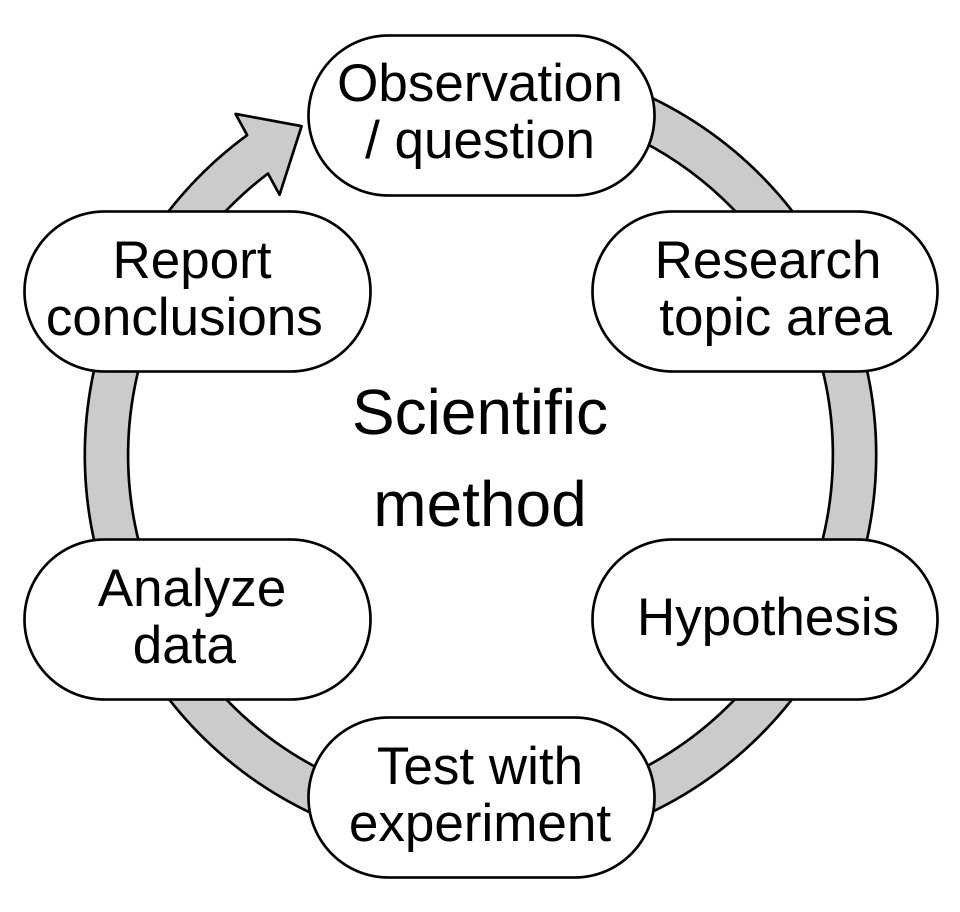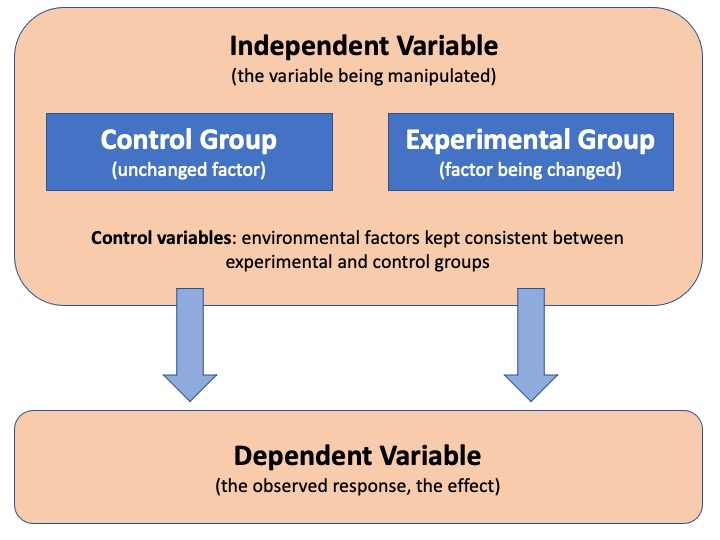OCR Specification focus:
‘Design experiments to solve practical problems, linking scientific knowledge to context and clearly defined aims.’
Experimental design is a foundation of practical biology, ensuring investigations are purposeful, testable and controlled. Clear aims, hypotheses and variables enable valid, repeatable experiments and reliable biological conclusions.
Aims in Experimental Design
A scientific aim explains the overall purpose of an investigation. It must be focused, biologically relevant, and linked to the context of the problem, in line with the OCR requirement to connect scientific knowledge to practical situations. Aims guide every decision in the method, including apparatus, measurements and data processing. Well-written aims usually address a relationship, effect or comparison, avoiding vague wording.
A strong aim:
states what the investigation will determine or measure
identifies the biological factor under study
has a narrow and testable focus
relates directly to existing biological understanding
Clear aims prevent inappropriate methods and ensure the experiment genuinely addresses the research question.
Hypotheses and Biological Reasoning
A hypothesis is a testable statement predicting the relationship between variables. It should express a cause-and-effect expectation and be based on scientific reasoning from prior knowledge. Hypotheses must be written so that they can be supported or refuted by data.
Hypothesis: A testable, predictive statement proposing how the independent variable will affect the dependent variable, supported by biological reasoning.
A strong hypothesis is measurable, directional (explains what will change and how), and justified using relevant biological principles, such as enzyme kinetics, transport processes or ecological interactions. A hypothesis is not an aim; the aim asks the question, whereas the hypothesis predicts the answer.

A visual representation of the scientific method, showing how a hypothesis leads to prediction, experimental testing, and analysis in a continuous investigative cycle. Source.
Variables in Experimental Design
Experiments explore how changing one condition affects another, making identification and control of variables essential for valid results.

Diagram illustrating the roles of independent, dependent, and control variables in an investigation, supporting the concept of a fair test in experimental design. Source.
OCR expects students to recognise independent, dependent and control variables, each with a specific role in experimental planning.
Independent Variable: The variable deliberately changed by the investigator.
Dependent Variable: The variable measured to observe the effect of changes to the independent variable.
A sentence here to separate definition blocks. Control variables require careful management to prevent confounding effects.
Control Variables: Factors kept constant to ensure that only the independent variable influences the outcome.
Controlling Variables
Control increases the validity of an investigation by reducing the influence of external factors. To control a variable, it must be:
identified clearly at the planning stage
kept constant using a measurable method (e.g. fixed temperature using a thermostatically controlled water bath)
monitored and recorded when complete control is not possible
Additional terms may be relevant for complex designs. Standardised procedures reduce variation between repeats by ensuring all samples are treated identically, while control experiments help confirm that results arise from the intended biological factor and not from external influences.
Ensuring Variables Are Measured Effectively
Experimental design must specify what will be measured, how it will be measured, and with what equipment. This includes measurement frequency, apparatus precision and appropriate units. The reliability of measurements is improved by repeat readings, allowing mean values to be calculated and reducing the impact of random error. Systematic errors must be minimised by calibrating apparatus and following consistent techniques.
Fair Testing and Validity
To meet OCR expectations, students must show how variable control and planning decisions contribute to a fair test. A fair test isolates the effect of the independent variable. The link between aim, hypothesis and variables must be explicit, demonstrating coherent scientific thinking.
Validity is supported when:
only the independent variable causes changes to the dependent variable
biological reasoning justifies predictions and choices
the design allows for sufficient data collection to evaluate the hypothesis
Replication and Repeatability
Good experimental design includes repeat trials and adequate sample sizes. This improves repeatability (consistency of results by the same investigator) and supports reproducibility (consistency by different investigators). Replication strengthens confidence in patterns and relationships shown by data.
Bringing Aims, Hypotheses and Variables Together
Every well-designed investigation must integrate these elements so that planning is purposeful and methodical. The aim expresses the intention, the hypothesis predicts the outcome using biological knowledge, and the variables define what will change, what will be measured and what will be controlled. When combined effectively, they produce a coherent plan capable of generating meaningful biological evidence.
FAQ
An aim should be precise, identifying the biological relationship being tested without including unnecessary procedural details. It should make clear what will be measured or compared and in what context.
Avoid broad statements such as “to investigate osmosis” and instead write focused aims, for example, “to investigate how sucrose concentration affects the rate of osmosis in potato tissue.” Clear aims help ensure that the method, variables and hypothesis are aligned with the purpose of the investigation.
A directional hypothesis predicts not just that a change will occur, but the expected direction of change.
For example:
Non-directional: “Light intensity affects photosynthesis.”
Directional: “Increasing light intensity increases the rate of photosynthesis, up to a point.”
Directional hypotheses are preferred because they show understanding of the underlying biology and make the prediction more testable against results.
There is no fixed number, but all key factors that could influence the dependent variable must be controlled. This often includes environmental conditions, volumes, concentrations and timing.
A good rule is: if a factor could plausibly affect your results, it must be controlled.
Each control variable should also be linked to a specific method of control, such as using a water bath for temperature or a buffer for pH.
Repeats are when the same experiment is carried out multiple times under identical conditions to check for consistency in the results.
Replicates involve using multiple samples or organisms within a single experimental run, allowing the mean to represent a broader sample.
Both improve reliability, but replicates also help reduce the influence of biological variation, which is particularly useful in ecological or organism-based investigations.
A control experiment is a separate test in which the independent variable is removed or kept at a baseline level. This shows whether the dependent variable changes in the absence of the factor being investigated.
Control variables reduce unwanted influences, while control experiments confirm that the biological effect is genuinely due to the independent variable. For example, using boiled enzymes in an enzyme experiment provides evidence that any reaction requires an active enzyme.
Practice Questions
Question 1 (2 marks)
A student plans an investigation to determine how light intensity affects the rate of photosynthesis.
Identify the independent variable and the dependent variable in this investigation.
Question 1 (2 marks)
1 mark for:
Independent variable: light intensity
1 mark for:
Dependent variable: rate of photosynthesis (accept oxygen production, bubble count, or change in volume of gas)
Question 2 (5 marks)
A hypothesis was written as: "Temperature affects enzyme activity."
Explain why this is not a suitable hypothesis for an A-Level biology investigation, and rewrite it so that it meets the requirements of a testable hypothesis.
Suggest two control variables that should be kept constant during an enzyme experiment and explain why controlling them is important for validity.
Question 2 (5 marks)
Up to 5 marks for:
Identifies that the original hypothesis is too vague or non-directional (1 mark)
Explains that it does not predict how temperature will affect the dependent variable (1 mark)
Provides a suitable rewritten hypothesis that is testable and directional, e.g. “Increasing temperature up to the optimum will increase enzyme activity, but temperatures above the optimum will decrease it.” (1 mark)
Suggests two appropriate control variables (e.g. pH, substrate concentration, enzyme concentration, volume of solution) (1 mark)
Explains that controlling variables ensures a fair test so that only the independent variable affects the dependent variable, improving validity (1 mark)

